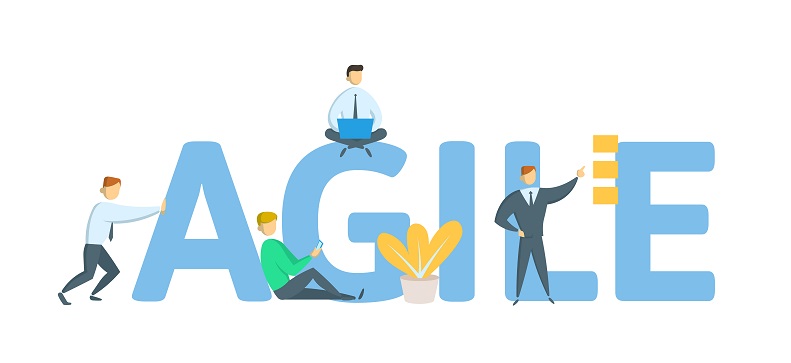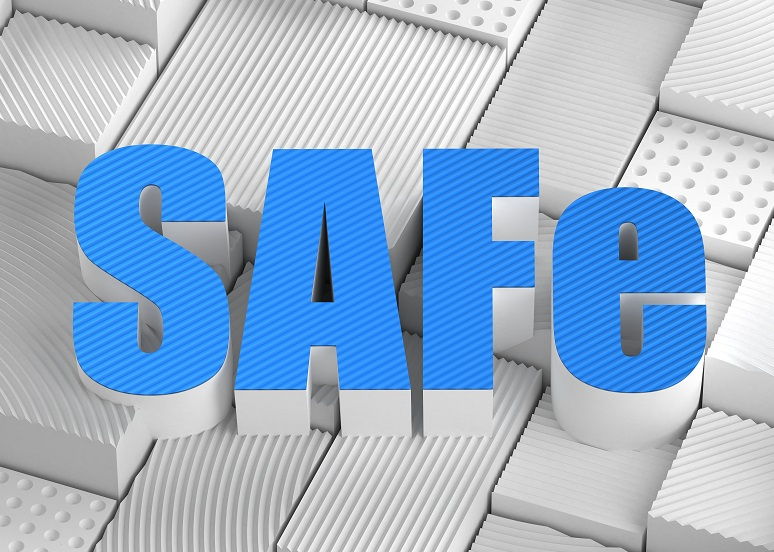Many businesses have adopted agile methods, especially in their IT operations. Although this is great, living in today’s fast-paced environment necessitates more.
This is particularly true to larger organizations. Larger companies are usually faced with the challenges that smaller and more nimble companies have in response to industry changes. To do this they need a system that allows businesses to ‘fail quickly and succeed even faster’, as well as a significant change in work, culture, and actions.
What Is Agile Framework?
Digital transformation requires adaptability and the quest for a more flexible way of working. With its iterative process, the Agile methodology offers relief. However, complex systems may begin to struggle with the implementation of the technology, and this is where the principle of scaling became critical. To understand the Scaled Agile Framework, you must first understand what Agile is and how it affects business.

The traditional methodology utilized by companies requires a significant amount of time before it can release its product or service. They usually undergo the following steps:
- First, they have to find a problem to solve and then determine how are they going to solve it;
- Create the product; and,
- Test it to see if it’ll solve the problem they’ve identified at the beginning.
Although this methodology shows significant results to some businesses, the fact that the process may consume so much time makes it unideal for many. Moreover, companies or teams might develop new ideas during the process, which might cause a delay in its execution. There are also cases wherein the ideas that you have months ago are no longer relevant. When this happens, you have to go over the complicated procedures to change or modify things, which isn’t practical.
Agile, on the other hand, is one of the major software methodologies used by companies for continuous flow and quick learning. Instead of planning for months before creating a product, Agile allows businesses to create a product in a short period. The method allows them to see how the products work. They’re able to immediately gain insights from the creation process, then build some more if they work well. By using Agile methodology, you may be able to build predictability within your team, learn faster, and save time when creating a product.
Thus, Agile methodology allows you to focus on creating a product that builds value right away. It results in the smooth flow of developing and deploying products or services.
Essentials of The Scaled Agile Framework
Since the Agile framework typically works in a particular team focused on a single product, people find it hard to implement this in larger organizations. It’s because larger organizations usually offer multiple products or services. This is where Scaled Agile Framework (SAFe) came in. The goal, however, shifts to build the same lean development mentality on the entire business and not just on the team level.
To make this possible, SAFe offers an easy and lightweight software development environment. The environment is a collection of organization and process patterns designed to help businesses scale lean and agile practices. SAFe is divided into three sections: team, program, and portfolio level.
Portfolio Level
Executives and leaders define the organization’s visions, strategic goals, and plans at the portfolio level. It helps companies deal with issues like funding, product road mapping, and change management. It also teaches them how to use Lean concepts to track their progress towards their objectives.
Company, visions, and architectural epics are all defined at the portfolio level. All three of these factors have the potential to result in large-scale development projects. After that, the epics and visions are passed down to SAFe’s programming stage, where they’re broken down and scheduled on the necessary release trains.
Program Level
The tasks and activities required to deliver solutions continuously via an Agile Release Train (ART) which are done at the program level. ART is a group of agile teams that deliver features adding value to customers regularly.
Project teams, stakeholders, and other resources are dedicated to critical, ongoing system development projects at the program level.
Team Level
An Agile team is a cross-functional group of no more than eleven people who identify, create, evaluate, and produce a value increment in a short amount of time. As mentioned, Agile businesses favor smaller groups. This is because the level of communication deteriorates as the size of a team becomes larger.
To solve this dilemma, SAFe employs the Agile development Scrum at the team level. Scrum is an iterative product development approach that emphasizes a regular delivery cadence. The delivery cadence is influenced by the cross-functional teams, a series of ceremonies, and some unique supporting positions.
After SAFe’s program-level finishes release, each iteration will be considered by the team during micro-level planning. Iteration requires a fixed-length timeframe where agile teams work and test systems to deliver incremental value.
Why Should You Use Scaled Agile Framework?
Below are some of the benefits that Scaled Agile Framework can provide to a large enterprise.

1. It Increases Employee Engagement
Employee engagement is one of the effective ways to upgrade a business from being a small to a large enterprise. SAFe can help achieve this.
An agile team is cross-functional and self-organizing to prepare, conduct, and perform work against the organization’s goals. Through SAFe, teams gain a clear perspective of what they want to do and are enthusiastic about it because they’re part of its creation. A healthy relationship is established by transparency and open communication, which leads to further collaboration and a more conducive atmosphere for teams to succeed.
2. SAFe Increases Productivity
Because SAFe ensures that teams are aligned with the product, the continuous engagement provides them with a high degree of clarity. This allows them to better grasp deliverables and, as a result, it sets stakeholder expectations.
This consistent understanding, work balance, and openness to the customer level significantly improve the work quality and overall productivity. SAFe may also help businesses achieve optimum meeting and production performance. It may also ensure that agile strategies continue to help companies produce high-quality products with short lead times.
3. Aligned Business Goals
The capacity of SAFe to keep teams aligned with business objectives is one of its advantages. This balance can often be overlooked in agile environments that take a more bottom-up approach, as testers and developers lose sight of the bigger picture of organizational objectives. SAFe’s top-down alignment and centralized decision-making, on the other hand, ensure that strategic priorities are kept in mind at all times, and all decisions are made in favor of those goals.
4. Faster Time To Market
Scaled Agile Frameworks enable businesses to deliver value to customers rapidly. Thus, it reduces batch workloads and sizes to transfer work through programs rapidly.
This increases output and value delivery, which may result in customer loyalty and team involvement.
5. Better Quality
Quality is essential for organizations to grow and respond to changing market environments quickly. These practices may be integrated into the Scaled Agile Framework, ensuring a smooth flow across all levels and teams.
Large organizations must build on secure environments, and without quality assurance, this isn’t possible. Thus, unnecessary rework and slower velocities would result in undesirable outcomes.
Final Words
If you’re working in a large enterprise, using Scaled Agile Framework is an option to stay efficient. SAFe ensures that everyone within your organization has aligned business goals. This results in better product quality, increased employee engagement and productivity, and faster ROI.



















